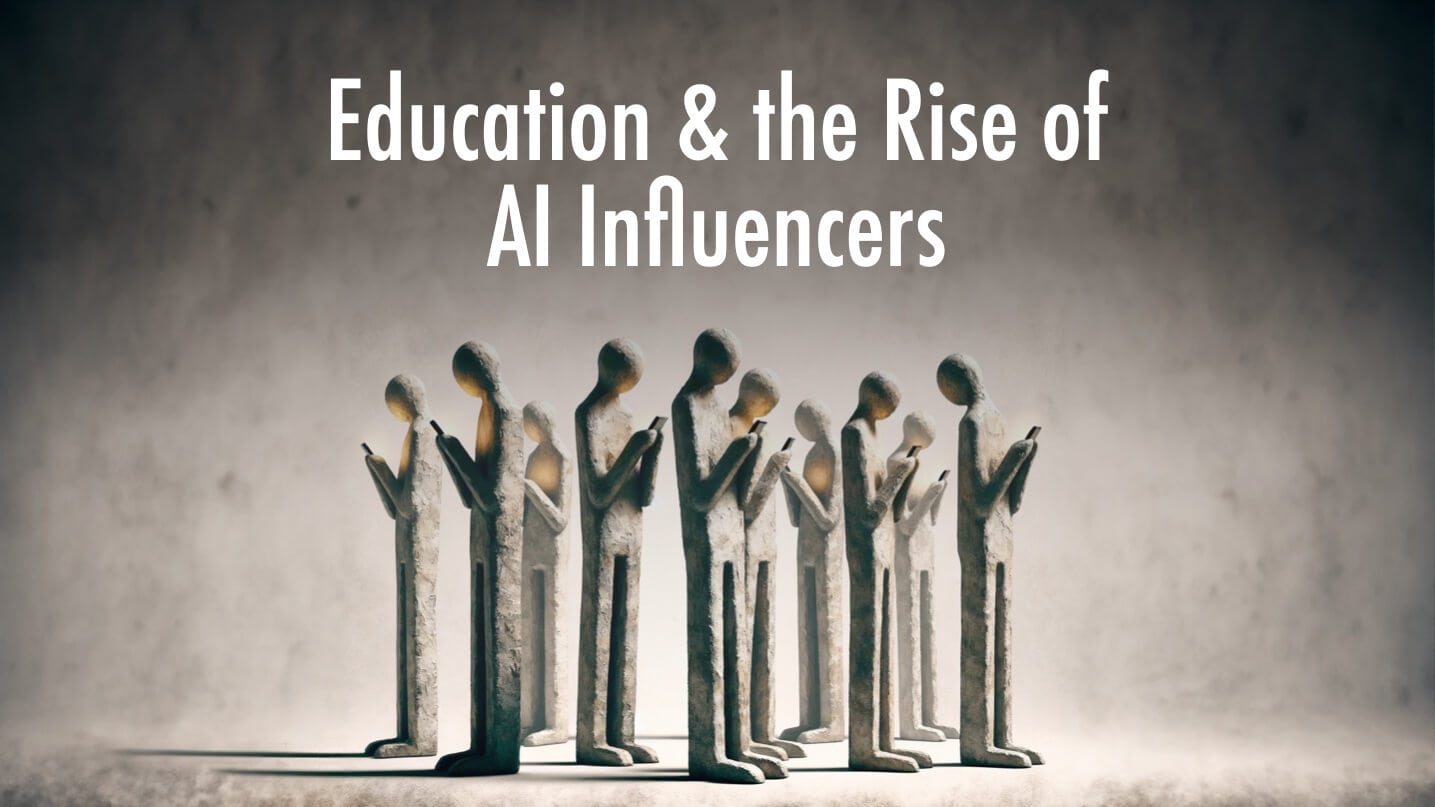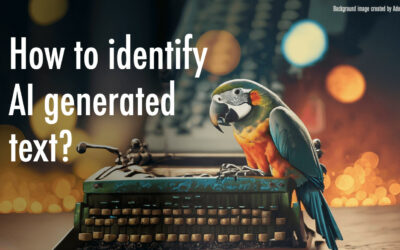I have been thinking hard about the nature of generative AI, what sets it apart from other technologies that have come in the past. It seems to me there are two key factors. The first is its ability to engage in dialogue, in natural language and the second are its multimodal capabilities, the ability to create authentic looking images and video extremely cheaply.
Now there are interesting possibilities, particularly for education, that I have explored as well.
That said, there are potential risks here that we quite definitely need to pay attention to. Two recent articles, one in the NYTimes (Our kids are living in a different digital world) and the other in New York Magazine (AI Is Coming for the Influencers) brought this home to me quite significantly.
The NYTimes article speaks to the manner in which influencer marketing has exploded in recent years, particularly on social media platforms like Instagram and TikTok. As the piece discusses, influencers can have a powerful impact on young people, akin to a close friend. This creates dangerous “parasocial relationships,” where the line between advertisement and authentic content blurs. Viewers, especially youth, can feel a false sense of friendship and trust with influencers. They are more likely to buy what influencers promote without realizing they are being marketed to. As the article says:
With ruthless efficiency, social media can deliver unlimited amounts of the content that influencers create or inspire. That makes the combination of influencers and social media algorithms perhaps the most powerful form of advertising ever invented.
And describing the influencers the NYTimes writes:
They aren’t traditional pitch people. Think of them more like the coolest kids on the block. They establish a following thanks to their personality, experience or expertise. They share how they’re feeling, they share what they’re thinking about, they share stuff they like — and sometimes they’re paid by the company behind a product and sometimes they’re not. They’re incentivized to increase their following and, in turn, often their bank accounts. Young people are particularly susceptible to this kind of promotion because their relationship with influencers is akin to the intimacy of a close friend.
It goes on to say:
This is the kind of viral word-of-mouth marketing that looks like entertainment, functions like culture and can increase sales.
And now we have generative AI.
AI is ready to step into an already fraught and space that is often invisible to many of us (segmented as we are in our information bubbles driven by algorithmic decisions that lack transparency). As the New York Magazine article reports:
Amazon, Google, and Meta have all started encouraging advertisers to use AI tools to generate ad copy and imagery, promising high performance, lower costs, and super-specific targeting. Now, brands are paying to advertise with AI-generated virtual influencers — synthetic characters that can offer at least some promotional juice at a fraction of the cost.
And companies are stepping forward, creating AI-generated “virtual influencers” to advertise their brands. These fictional characters have rapidly growing follower counts and can post constant promotional content at very little cost.
As I have argued elsewhere, humans as social beings will by necessity respond to these “artificial agents” as if they were real. There is significant evidence on cognitive science, developmental and evolutionary psychology we suggest that this is the product of highly sophisticated, deeply entrenched inferential principles that are quite inaccessible to conscious introspection or voluntary control. It happens with characters we think we know because we see them on TV, and it will quite definitely happen with these AI agents. As we wrote in Mishra, Warr & Islam, 2023:
Humans are social beings, with a significant proportion of our cognitive activity based on inferring the social norms, beliefs, and desires of other people. Moreover, we are cognitive misers, and we will take psychological short-cuts to minimize cognitive effort. As Kahneman (2011) argued in his book “Thinking, Fast and Slow,” inferences are forms of “fast thinking” that operate automatically and are made with little voluntary control, driven by instinct and emotion. What this means is that it is easier to believe and act as if LLM’s are psychological beings than to consider them machines. Disbelief takes cognitive effort while engaging with these GenAI models and interpreting their actions through a social/psychological lens is effortless. Our social brains, honed through millions of years of evolution, are not trained or prepared to deal with these boundary objects. For these reasons, we will anthropomorphize GenAI technologies despite knowing better. In other words, we will often attribute psychological states such as beliefs, intentions, and desires to these technologies even though we know that they lack personal experiences, emotions, or consciousness and that their outputs are purely the product of learned patterns, devoid of personal insight or emotional depth. We find them to be psychologically real in ways that other technologies are not and never have been. Just to be clear, the point here is not that these systems are sentient or have internal psychological states, but rather, as humans and social beings, we will react to them as if they were a psychological other.
And it is not just young people. We are all susceptible to this. We will, whether we like it or not, develop genuine parasocial bonds with AI influencers who do not actually exist. And virtual influencers allow brands, political parties and bad actors to sidestep regulations even more easily, since they are not real people subject to advertising laws.
So what does this mean for education?
As I have written elsewhere, I believe that concerns about GenAI-enabled cheating and plagiarism in education are exaggerated. I am confident in the ability of educators to adapt and continue assessing student learning effectively, even with the advent of GenAI tools. More importantly, educators are likely to use these tools to enhance their students’ intellectual growth. The real issue, however, lies in how GenAI will reshape the wider cultural, political and social landscape within which education functions. This demands a forward-thinking approach from educators, leaders, and policymakers, focusing on long-term strategies rather than immediate solutions.
This I believe is just the beginning. We should be prepared.






0 Comments